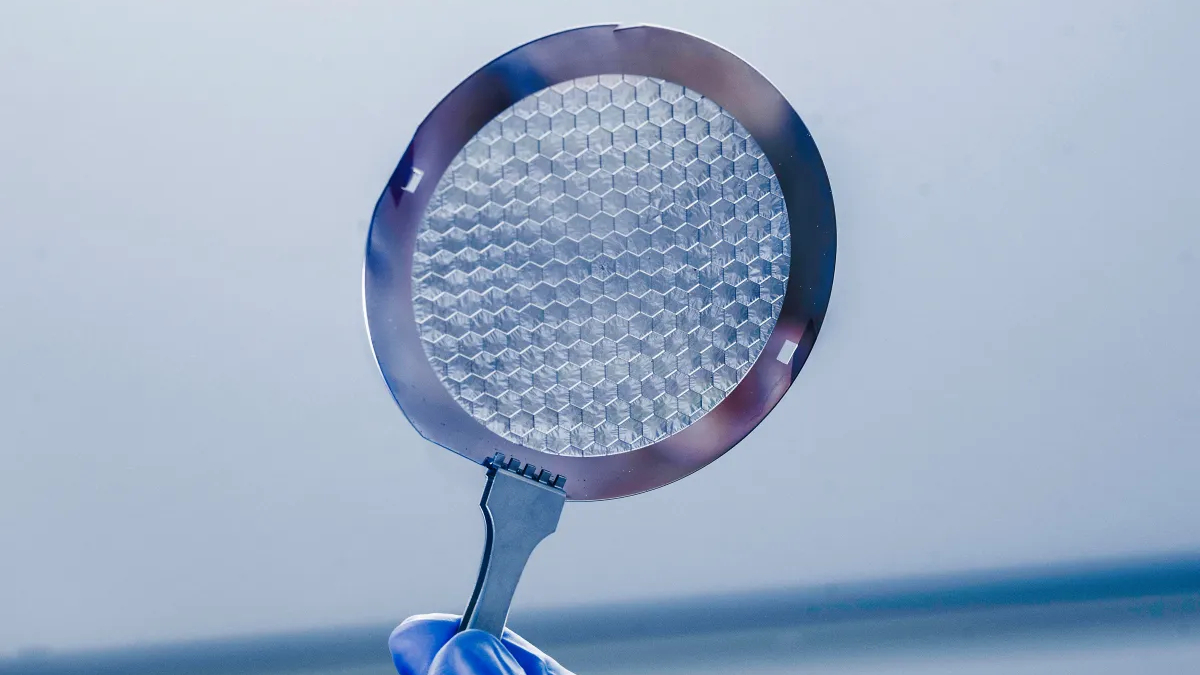
To truly understand what makes the solar wind tick, heliophysicists must analyze the minuscule features on the sun's surface that help accelerate the star's charged particles out through the solar system. And to perform that task with better precision, they need better ways of seeing in ultraviolet.
Enter a technology called the photon sieve: a sort of lens that helps subtly bend ultraviolet light toward a camera. To be clear, a photon sieve is no ordinary lens; it is a cutting-edge work of engineering only possible with the most modern techniques. Sun-facing spacecraft later this decade are expected to go into Earth's orbit with photon sieves in their arsenal.
A photon sieve looks like a honeycomb, its hexagonal structure supporting a thin membrane of silicon or niobium. The membrane is thin indeed: NASA engineers have developed sieves as thin as 100 nanometers, which is about one-thousandth the width of a human hair. The thinner the sieve, the more light it can transmit.
Related: Sun blasts out highest-energy radiation ever recorded, raising questions for solar physics
NASA's sieves are also pockmarked with concentric circles of tiny holes. The largest is at a sieve's center, with every following ring going outward getting smaller, with their holes decreasing in size as well At their smallest, the perforations can be as tiny as 20 micrometers across. That's about the size of a bacterium. "It's a sheer physical challenge to construct sieves with such precision," Doug Rabin, a heliophysicist at NASA's Goddard Space Flight Center, said in a statement.
This setup allows a sieve to act like a lens, refracting the ultraviolet light passing through and bending it so that a camera behind it can see more detail.
Photon sieves are engineered to see in extreme ultraviolet (EUV), which has shorter wavelengths and higher energy than other types of ultraviolet light. Today's sun observatories, such as the Solar Dynamics Observatory (SDO), already watch our star's EUV light. But a future observatory with a photon sieve could resolve the fine details in EUV with 10 to 50 times more precision than SDO can manage today.
Get the Space.com Newsletter
Breaking space news, the latest updates on rocket launches, skywatching events and more!
A 250-micrometer-thick-membraned sieve will go up on the Virtual Super Optics Reconfigurable Swarm (VISORS), for instance, expected to launch in 2024. Another sieve is planned to fit into the Multi-slit Solar Explorer (MUSE), presently scheduled for 2027.
Join our Space Forums to keep talking space on the latest missions, night sky and more! And if you have a news tip, correction or comment, let us know at: community@space.com.

Rahul Rao is a graduate of New York University's SHERP and a freelance science writer, regularly covering physics, space, and infrastructure. His work has appeared in Gizmodo, Popular Science, Inverse, IEEE Spectrum, and Continuum. He enjoys riding trains for fun, and he has seen every surviving episode of Doctor Who. He holds a masters degree in science writing from New York University's Science, Health and Environmental Reporting Program (SHERP) and earned a bachelors degree from Vanderbilt University, where he studied English and physics.









